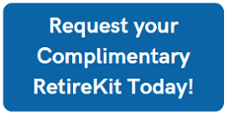Healthcare Provider Update: Healthcare Provider for Halliburton: Halliburton primarily utilizes the services of Aetna for its employee health benefits. Aetna offers a range of health insurance plans, including employer-sponsored coverage that meets the needs of Halliburton's workforce. Potential Healthcare Cost Increases in 2026: In 2026, Halliburton may face significant increases in healthcare costs, impacting its employee benefits strategy. The health insurance marketplace is experiencing anticipated premium hikes, with some states potentially exceeding a staggering 60%. Contributing factors include rising medical costs, the possible expiration of enhanced federal premium subsidies, and aggressive price adjustments by major insurers. As a result, Halliburton might need to adjust its health plan offerings, explore cost-sharing strategies, and prepare for a financial landscape where employee out-of-pocket expenses could rise dramatically. Click here to learn more
Choosing an IRA rollover means that your money remains tax-advantaged and capable of growth, as in a Halliburton-sponsored plan. You may also gain more investment options than what may have been available in your Halliburton-sponsored plan. You may also gain oversight of managing these important retirement assets from your trusted Advisor.
If you roll your retirement plan assets over into an IRA account that you already own through your Advisor, you also receive the benefit of combined statements and holistic investment planning, making it easier to track your overall financial situation.
| 'Receive the benefit of combined statements and holistic investment planning, making it easier to track your overall financial situation.' |

|
Some of the benefits of rolling your money into an IRA include:
Tax-deferred growth potential: This generally avoids current income tax and distribution penalties when removed from a Halliburton-sponsored retirement plan.
More investment choices: This allows for additional contributions, if eligible. IRAs can be combined and handled by one provider, thereby reducing trustee costs and consolidating statements. Protection from creditors in federal bankruptcy proceedings. The combined amount of your required minimum distributions (RMDs) can be taken from any of your Traditional, SEP or SIMPLE IRAs.
However, there are also some important considerations that Halliburton should make before rolling over their money into an IRA, these include:
- Internal management fees might be higher than in a Halliburton-sponsored retirement plan.
- Fees and expenses depend largely on the investments you choose.
- Loans from an IRA are not allowed.
- Early distributions may be subject to a 10% IRS tax penalty in addition to income tax.
- RMDs begin April 1 following the year you reach 70½ and annually thereafter; leaving the money in the former Fortune-500 plan may allow RMDs to be delayed until separation from service.
- IRAs are subject to state laws governing malpractice, divorce, creditors (outside of bankruptcy), and other lawsuits; leaving the money in the former Halliburton-plan may provide additional protection against creditors.
- Net unrealized appreciation (NUA) is the difference between what you paid for employer securities and their increased value. You lose favorable tax treatment of NUA if the funds are rolled into an IRA.
Hopefully, these insights will be helpful as you plan your retirement from Halliburton.
For more information about this topic, view our e-book here: https://retirekit.theretirementgroup.com/will-your-retirement-plan-retire-with-you-e-brochure-offer
Featured Video
Articles you may find interesting:
- Corporate Employees: 8 Factors When Choosing a Mutual Fund
- Use of Escrow Accounts: Divorce
- Medicare Open Enrollment for Corporate Employees: Cost Changes in 2024!
- Stages of Retirement for Corporate Employees
- 7 Things to Consider Before Leaving Your Company
- How Are Workers Impacted by Inflation & Rising Interest Rates?
- Lump-Sum vs Annuity and Rising Interest Rates
- Internal Revenue Code Section 409A (Governing Nonqualified Deferred Compensation Plans)
- Corporate Employees: Do NOT Believe These 6 Retirement Myths!
- 401K, Social Security, Pension – How to Maximize Your Options
- Have You Looked at Your 401(k) Plan Recently?
- 11 Questions You Should Ask Yourself When Planning for Retirement
- Worst Month of Layoffs In Over a Year!
- Corporate Employees: 8 Factors When Choosing a Mutual Fund
- Use of Escrow Accounts: Divorce
- Medicare Open Enrollment for Corporate Employees: Cost Changes in 2024!
- Stages of Retirement for Corporate Employees
- 7 Things to Consider Before Leaving Your Company
- How Are Workers Impacted by Inflation & Rising Interest Rates?
- Lump-Sum vs Annuity and Rising Interest Rates
- Internal Revenue Code Section 409A (Governing Nonqualified Deferred Compensation Plans)
- Corporate Employees: Do NOT Believe These 6 Retirement Myths!
- 401K, Social Security, Pension – How to Maximize Your Options
- Have You Looked at Your 401(k) Plan Recently?
- 11 Questions You Should Ask Yourself When Planning for Retirement
- Worst Month of Layoffs In Over a Year!
What are the main eligibility criteria for employees under the Halliburton Retirement Plan, and how have these criteria evolved since the plan was frozen to new participants after December 31, 1996? In what ways do these eligibility requirements impact current and future Halliburton employees?
Eligibility Criteria: The Halliburton Retirement Plan was frozen to new participants after December 31, 1996. Employees who were active participants and at least 55 years old by that date remain eligible under the plan. The eligibility criteria have remained largely unchanged for these participants, affecting current employees by limiting new enrollments, which can reduce the overall scope of retirement benefits offered to newer hires(Halliburton_2_27_2015_H…).
How does the funding mechanism of the Halliburton Retirement and Savings Plan impact the retirement benefits provided to employees? Discuss the actuarially determined contribution method and how it aligns with IRS regulations for pension plans in 2024.
Funding Mechanism: The Halliburton Retirement and Savings Plan uses an actuarially determined contribution method to fund retirement benefits, ensuring that the plan is in line with IRS regulations. This approach calculates contributions based on the plan’s liabilities and participants' service, helping maintain the financial health of the plan in 2024 by adjusting employer contributions as needed to meet legal obligations(Halliburton_2_27_2015_H…).
In the context of the Halliburton Retirement Plan, what options do employees have for distribution upon reaching retirement age or in the event of early retirement? Elaborate on the various distribution forms available, such as lump-sum payouts and annuities, and how these options are designed to support employees’ financial needs after retirement.
Distribution Options: Halliburton employees have various distribution options upon reaching retirement age, including lump-sum payouts and annuities. These options are designed to cater to diverse financial needs, with employees being able to choose between a one-time lump sum or recurring payments in the form of annuities for greater financial stability post-retirement(Halliburton_2_27_2015_H…).
What are the implications of excluding certain employee groups (e.g., union members, non-resident aliens) from the Halliburton Retirement Plan on the workforce's overall retirement security? Assess how this could affect Halliburton's ability to attract and retain diverse talent in the company.
Exclusion of Employee Groups: The Halliburton Retirement Plan excludes union members, non-resident aliens, and leased contractors from participation, which can impact the overall retirement security of these groups. This exclusion might limit Halliburton's ability to attract a more diverse workforce, as retirement benefits are a key factor in talent retention(Halliburton_2_27_2015_H…).
How can Halliburton employees access their retirement plan benefits, and what steps do they need to take to initiate a distribution request? Provide a detailed explanation of the distribution request process as outlined in the Halliburton Retirement Plan documentation.
Accessing Retirement Benefits: To access their retirement benefits, Halliburton employees must contact the Halliburton Benefits Center at the provided phone number. The distribution request process involves completing specific forms and complying with eligibility requirements to initiate benefit disbursement(Halliburton_2_27_2015_H…).
Considering changes in the economy and retirement landscape, how does Halliburton's approach to retirement benefits compare to industry standards? Analyze the strengths and weaknesses of Halliburton's retirement offerings relative to competitors in the same market segment.
Industry Comparison: Halliburton's retirement offerings, including a defined benefit plan, are competitive but limited due to the freezing of new participants after 1996. This places the company slightly behind competitors that offer more flexible or modern retirement plans, although its pension benefits remain a strong feature for eligible long-term employees(Halliburton_2_27_2015_H…).
How is the financial health of the Halliburton Retirement Plan monitored, and what measures are in place to ensure that the plan remains funded adequately to meet the obligations to its participants? Delve into the regulatory requirements that Halliburton must adhere to, including any recent updates to the IRS regulations in 2024.
Monitoring Financial Health: Halliburton monitors the financial health of its retirement plan through regular actuarial reviews to ensure that it remains adequately funded. The company adheres to IRS regulations and uses plan assets to cover necessary expenses, ensuring the plan can meet obligations to participants(Halliburton_2_27_2015_H…).
What role do Halliburton employees play in influencing the future of the retirement plan? Discuss any avenues available for employees to provide feedback or suggestions regarding changes to the retirement plan offerings or structure.
Employee Influence: While Halliburton employees may not directly influence retirement plan policy changes, they can provide feedback through the Benefits Center. However, changes to frozen plans are rare, so employee input may have limited impact on restructuring or reopening the plan(Halliburton_2_27_2015_H…).
What specific resources does Halliburton offer to employees for learning about and planning their retirement, and how can they be leveraged effectively? Discuss the importance of these resources in helping employees make informed decisions about their retirement.
Retirement Resources: Halliburton offers resources such as retirement planning tools and access to benefits counselors to help employees make informed decisions about their retirement. These resources are crucial in helping employees understand their retirement options and optimize their benefits(Halliburton_2_27_2015_H…).
How can employees at Halliburton contact the company to learn more about the retirement plan and its provisions? What specific contact methods or resources are available for employees seeking further information or assistance regarding their retirement benefits?
Contacting Halliburton: Employees seeking more information about their retirement benefits can contact the Halliburton Benefits Center directly. This service provides guidance on plan details, distribution options, and general retirement inquiries, ensuring employees have access to the assistance they need(Halliburton_2_27_2015_H…).
/General/General%2013.png?width=1280&height=853&name=General%2013.png)




-2.png?width=300&height=200&name=office-builing-main-lobby%20(52)-2.png)









.webp?width=300&height=200&name=office-builing-main-lobby%20(27).webp)


-2.png)









.webp)